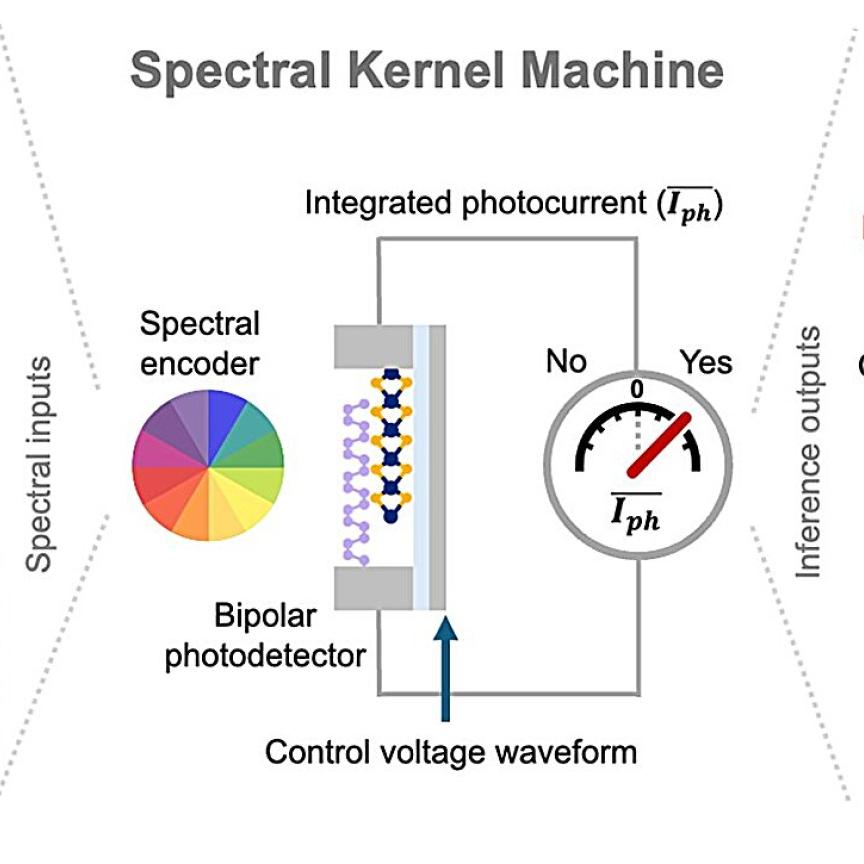Imagine an inspection technique that senses the molecular properties of objects. Such a technology could potentially have a big impact in a lot of industrial fields.
Hyperspectral imaging is able to identify the chemical properties of materials. Objects have a unique chemical ‘fingerprint’, visible through highly complex spectral information. However, hyperspectral camera technology has not yet been widely applied in an industrial environment. Interface standards are missing and application development has yet to be done.
To bring hyperspectral imaging onto the factory floor, an enabling technology is required; there need to be configuration concepts that will allow vision-related companies to work with the technique. By providing this, in my opinion, hyperspectral technology has the potential to become the next big thing in machine vision.
Challenges and solutions
Spectral technology produces a couple of hundred data points per object pixel, which results in a deluge of data to be processed in real-time. This can be a challenge for industrial inspection processes – industrial bulk sorting, for example, requires object decisions within a few milliseconds. Parallel processing using GPUs or FPGAs is therefore mandatory. However, vision companies want to invest in ready-to-use cameras rather than in developing data processing platforms. One potential solution to this is to use a hardware adapter connected to the hyperspectral camera. Nvidia’s Tegra system-on-chip is capable of embedded computing and could be one way to power such as system.
Another challenge is to provide generic operability and standard interfaces for industrial hyperspectral systems. Spectral technology relies on the instruments being accurate and giving repeatable measurements. There can be optical and electrical variation depending on the acquisition method, and currently it seems hard for camera suppliers to ensure precise and repeatable responses, even for products of the same batch. Furthermore, because of missing interface standards, early adopters could get annoyed by differing interface requirements from supplier to supplier.
One solution to these hurdles is a generic data processing core adapted to any hyperspectral camera. In doing this, the behaviour of diverse acquisition technologies becomes standard. Application relevant information like the sweetness of food or its moisture content are extracted and communicated over standard interfaces like GigE Vision or Camera Link. This means system integration can follow the same principles as conventional machine vision cameras.
Hyperspectral imaging has its origins in science and aerospace but, in the last few years, certain hyperspectral camera suppliers – and now machine vision distributor Stemmer Imaging – have begun to offer a new approach to the technique. Chemical colour imaging (CCI), which can be applied alongside existent processing systems, is designed to be a holistic approach bringing together the advantages of spectroscopy and imaging. A hyperspectral camera extended by CCI acts like a conventional colour camera, but the colours describe the molecular properties of the object.
Scientific analysis of hyperspectral data is typically the field of experts in multivariate data processing and chemometrics, as well as spectroscopy. Chemical colour imaging encapsulates these technologies and provides a promising alternative suitable for industrial vision tasks. Here, the user deals with spectral information in the colour domain and complex spectroscopic problems are solved based on the interpretation of image information. Since all workflows are based on those known in machine vision, hyperspectral cameras using CCI can be applied like standard vision cameras and allow solutions to industrial challenges that were not thinkable in the past.
Bringing spectral to market
In terms of industrial applications, food processing, recycling, mining and the pharmaceutical sector are the main application areas for hyperspectral systems today. Spectral cameras are already used to automate the separation of plastics in recycling. Investigation into spectral inspection of medicines shows the potential for contactless measurement of active pharmaceutical ingredients. In addition, areas like potato sorting could bring spectral imaging to mass markets, which would in turn lower the manufacturing costs of the cameras.
The first hyperspectral systems were introduced into niche applications in around 2006. In 2014, the first general purpose approach was introduced using a data processing adapter and configuration software based on CCI. Today, the integration of hyperspectral technology is being powered by machine vision distributors in Europa and Asia.
From my point of view, hyperspectral technology has the potential to become the next evolutionary step in vision technology – after monochrome and colour imaging, and subsequently 3D imaging, CCI takes this evolution to the next level. CCI is an enabling technology that makes complex hyperspectral data on a molecular level usable for vision companies from all over the world.


